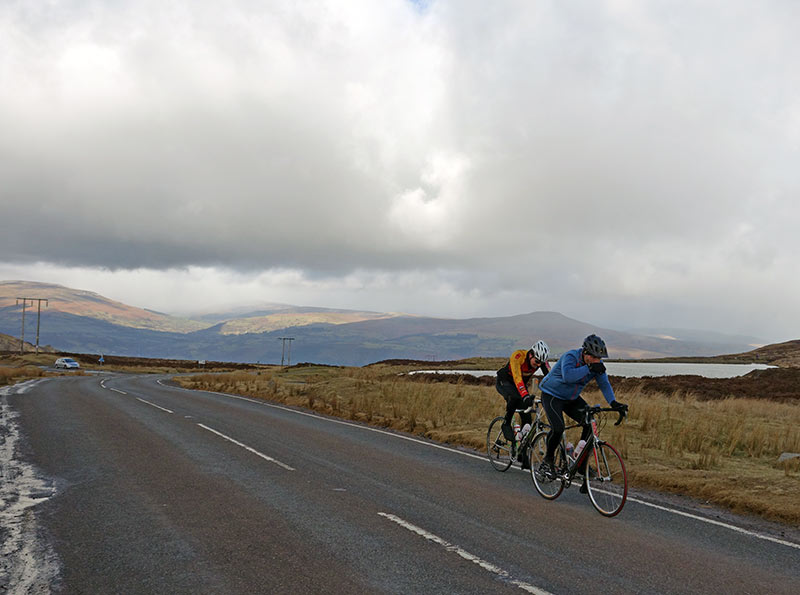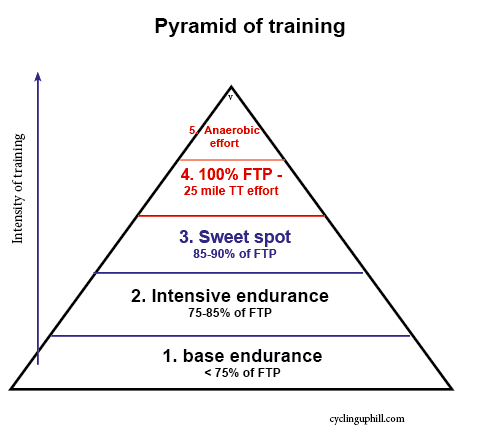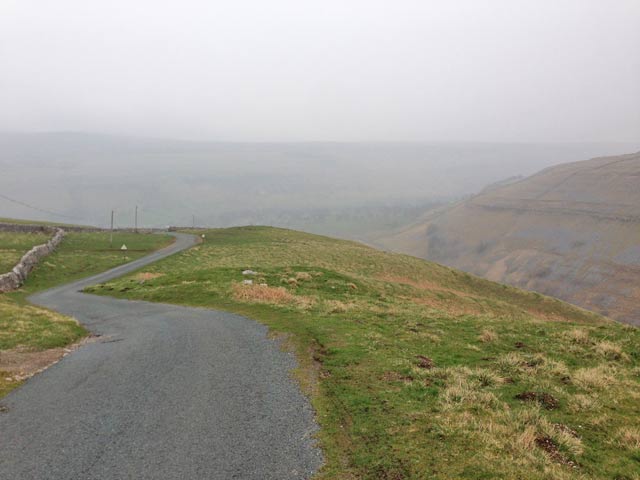I remember when I was 13, going on a cycle holiday with a friend to Lofthouse. One day, we rode 75 miles on mountain bikes, including Greenhow hill and Trapping Hill in Nidderdale (which seemed like mountains at the time). The furthest we had been before was about 20 miles. It was an epic ride and for about four days after, we couldn’t walk properly. It was kind of an interesting experience to do something so far out of my comfort zone and capacity. In the whole of my cycling career, I have never been so shattered or literally crawled into a sleeping bag after a long bike ride. Perhaps because of this chastening experience, I’ve always prepared carefully for long distance riding – making sure I’m sufficiently trained before making a big jump in mileage. In a nutshell, you can always try and do long distances untrained, but it’s a lot more pleasant if you can make sufficient training to get used to the long distance.

Training for long distance sportives
Quite a few people ask about advice for doing a big ride, perhaps a hilly 100 mile sportive. There is no particular set training plan you need to follow, but as a few guiding principles, I would suggest.
If you’re starting from no training at all, any cycling is going to help build up fitness. The first thing is just to go out on the bike, increase the distance each time and get used to being in the saddle for a longer time. If you start off with a 30 mile ride, each week try to add another 10 miles on.
Long rides. For a sportive that might take 6-7 hours, if you can manage to do training rides of 3-4 hours, you will be a long way to getting ready for the endurance. If possible, try and do a few 5 hour rides. The more you can do the better, but a weekly long ride of 3-4 hours will be reasonable preparation.
Decent intensity. If you are time pressed and struggling to find time for a long ride, to some extent, you can make up for the lack of miles, by increasing the intensity of cycling. For some of the training rides, try and maintain a good pace – just below your threshold. This maybe around 18-20mph on a flatish course or 90% of FTP, 80-85% max heart rate. Some call it sweet spot training. You may find that you can only maintain this level for an hour, then you start to slow down. Training at this higher level has a bigger training benefit, but has the added benefit of not being as tiring like full on intervals.
Mix up training. If you are able to get some base fitness from riding for a couple of months, it will then be helpful to mix up the training – not just plodding along at same effort all the time. You can start to do some hill intervals. You don’t have to go at 100% all out pace, but it will be good practise for the hills on the big ride.
Stress and recovery. The basic principle of training is stress and recovery. You stress muscles by doing more than before – recovery then allows your muscles to become stronger. If you are tired from training too much, rest and recovery will be the biggest help. It depends how many hours you have to train. If it is only a small number, you are unlikely to be over-training.
How long to prepare?
The longer you can prepare, the better. For a 100 mile sportive, you could just about get ready in a couple of months. But, if you can have some base fitness over winter, then you will be in a much better position, rather than having to start from scratch in April.
How to find time?
In training for a long distance ride, everything counts. Even if it is a 30 minute daily commute or cycle to the shops, it will be of some help, helping to boost the long-distance endurance.
If you’re really short of time, you may find it easier to go out on your own. If you’re meeting a group, you tend to lose half an hour waiting for people to turn up or fixing punctures by the side of the road. But, on the other hand, if you go out with other people, you may find more motivation to go further than you would have done on your own.
Common sense

A lot of it comes down to common sense. Start with a base level of fitness, then try and work on some speed training. For a cyclo sportive, it doesn’t have to be overly scientific or structured (unless that approach really appeals to you.)
100 mile time trial training
There is some overlap with this article on 100 mile time trial training. If you’re keen to reduce your time for long sportives, then some of the tips in that article will help. However, a 100 mile sportive is likely to have a lot more steep climbs than your average flat 100 mile time trial. In that case, you want to be adding some similar climbs. If not as long, try and find some steep ones, so you can get used to climbing out of the saddle.
Dealing with hills
If you do a sportive like Etape du Dales or Fred Whitton, the climbing really makes it a very different challenge to a flat 100 mile ride. I’m convinced that a sportive like Fred Whitton is much harder than a multi-mountained stage in the Tour de France (see British hills vs Pyranees). The short sharp hills create much more muscle strain than a nice smooth climb like the Col du Tourmalet.
The heavier you are the more you will suffer on the climbs, losing a few kilos will help a lot. But, you probably knew that already!
Some extra tips for long distance rides
- Build up at a steady rate. If you are used to doing 100 miles a week, you could try increase your weekly total by 10-20% a week.
- Don’t feel obliged to do same mileage every week. It is good to have an easier week once a month.
- Make sure you have correct position, such as saddle height. You can get away with wrong position for short rides, but on long rides you will start to feel any problems.
- You may find as much pain in back and neck as in the legs, especially if there is lots of climbing out of the saddle. You can try to add some core strength exercises like sit ups and planks to add a little more upper body strength.
- Learn to increase the efficiency of your cycling – but don’t compromise comfort for aerodynamics.
- Longer distanced depends primarily on aerobic capacity. Therefore, much of your training will be in your aerobic zone of 65% – 80% max heart rate.
- Threshold training. As well as training at this base level, I also recommend doing some training at your ‘threshold level’ This is the maximum level before you go anaerobic. It is harder work, but will help increase your speed and aerobic capacity.
- Rest is as important as stretching yourself. Give your muscles chance to recover when they need it. Watch out for signs of over-training, it is important to maintain enthusiasm and eagerness for cycling.
- Because of the long hours in the saddle, it is good to find some like minded company to help motivate and enjoy the mileages.
- Pacing in ride. It is good to know your limits, if the ride is a big step up from what you have done in training, you need to be more conservative in how you start the ride. Look carefully at height gain because this can be more important than extra distance.
- The week before, keep riding, but don’t overdo it in the few days before.
Related



Thank you so much Tejvan, your advice is really appreciated.